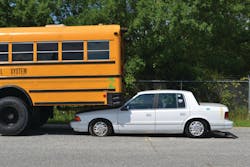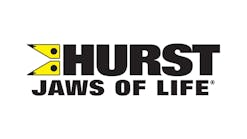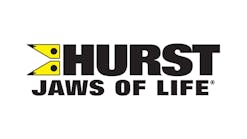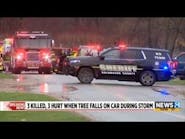SUBJECT: Vehicle Underride
TOPIC: Capturing Vehicle Suspension Systems
OBJECTIVE: Given an underride scenario, the rescue team shall demonstrate capturing a
vehicle’s suspension system
TASK: The rescue team shall utilize department tools and equipment to develop multiple methods
for capturing the suspension system of the upper and lower vehicle in an underride scenario
One of the most common underride scenarios that a rescue team will confront is most likely a vehicle underneath an 18-wheeler’s trailer. Many times, the large vehicle was stopped and the driver of the smaller vehicle that was following failed to stop in time. This University of Extrication column addresses a technique called “capturing” the suspension of the two vehicles involved. Many rescuers have not given thought to the need for control of the suspension systems although doing so is a very progressive action and will be very effective at real-world incidents.
For an underride scenario, one strategic option is to stabilize the truck’s trailer and extricate the trapped patients from the vehicle by opening the side of the vehicle or by completing a trunk tunneling task. Another option is to lift the truck’s trailer off of the vehicle beneath it. Yet another strategic decision that could be made is to pull the vehicle out from underneath the larger vehicle and then extricate the occupants at that point. You have to make those strategic decisions at the scene.
Regardless of which rescue strategy is used, a common tactical consideration should be to gain control of the suspension systems of both vehicles. To capture the suspension, rescuers use equipment to secure the shock absorbers, coil springs, leaf springs, axles or even air suspension systems in the condition found.
Think about it. If a car rammed under a truck, its front suspension system is compressed because it’s jammed underneath the trailer. In the same vane, if the trailer was not fully loaded, the trailer may be lifted upward slightly expanding its rear suspension system. You want it to remain that way and capturing the suspension is what makes that possible.
For the car, you use equipment such as ratchet straps or chains to secure the front suspension in the compressed position. Strapping is typically run from one front wheel across to the other front wheel. This is the difficult part and one that needs to be practiced during training. Ideally, you run from one wheel, across the hood, and hook to the other wheel but the problem may be that the hood is not accessible. You have to work on this scenario to come up with options that will work for you.
To capture the rear suspension of the trailer, you are either binding the suspension up and tight to the truck or you are trying to maintain the distance between the trailer flooring and the axle. Rescuers pack cribbing in the space between the axle and the underside of the trailer floor to accomplish that.
Weighing your options
Therefore, with both suspensions taken care of, you have several tactical choices. You can use lifting equipment to lift the trailer off the car or you can bring in a heavy wrecker to lift the trailer. Since you captured that rear suspension, it will come right along with the trailer. Since you packed cribbing between the rear axle and the underside of the trailer, you also have the option of lifting the large vehicle by working beneath its rear axle. Now, every inch of lift with the tools will result in lift of the truck. You won’t waste effort lifting the axle only to find that it’s just compressing the suspension and that the truck is not going up at all.
Since you captured the suspension of the car, as you lift the truck, the car will also stay low which gives you more clearance sooner in the lifting task. Without capturing, the car’s suspension would rise up and you would not gain any clearance during the initial part of the lift.
Rescue teams are encouraged to stage an underride scenario and practice techniques for capturing the suspension of the larger vehicle and the vehicle placed under it. Practicing now can make a big difference at an actual scene.
Specific step-by-step instructions for total sidewall removal, trunk tunneling and vehicle lifting are detailed in this author’s self-published Vehicle Rescue 1-2-3 book.
TASK: The rescue team shall utilize department tools and equipment to develop multiple methods for capturing the suspension system of the upper and lower vehicle in an underride scenario.
Ron Moore, a Firehouse® contributing editor, retired as training chief for the McKinney, TX, Fire Department. He also authors a monthly online article in the Firehouse.com “MembersZone” and serves as the Forum Moderator for the extrication section of the Firehouse.com website. Moore can be contacted directly at [email protected].

Ron Moore
RON MOORE, who is a Firehouse contributing editor, recently retired as a division chief with the McKinney, TX, Fire Department and now serves with Prosper, TX, Fire Rescue. He self-published the Vehicle Rescue 1-2-3 training manual and serves as the forum moderator for the extrication section of Firehouse.com . Moore can be contacted directly at [email protected].






